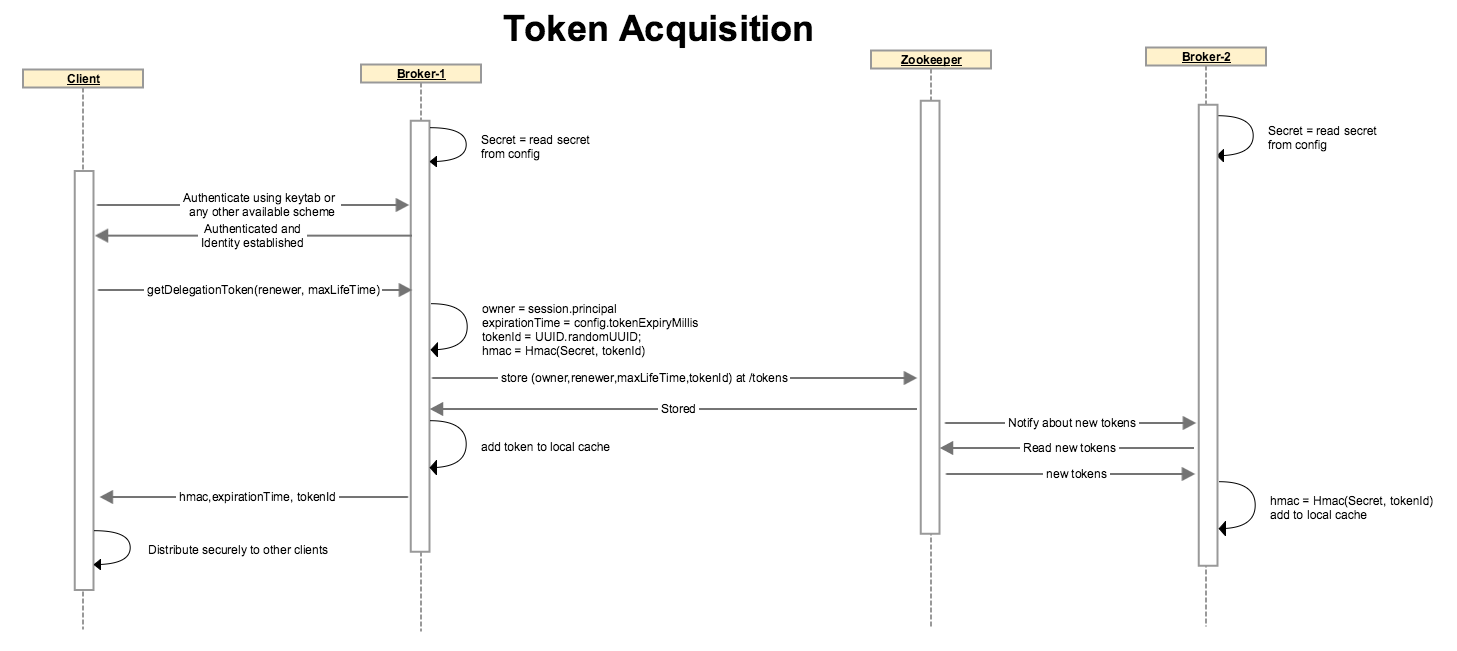...
A client connects with one of the kafka broker. Client must be authenticated using any of the available secure channels so it must have a way to authenticate, i.e. Kerberos keytab or TGT.
Once a client is authenticated, it will make a broker side call to issue a delegation token. The request for delegation token will have to contain an optional renewer identity and max lifetime for token. The renewer is the user that is allowed to renew this token before the max lifetime expires. Renewer will default to the owner if not provided and Max life time will default to a server side config value (default days) Brokers will allow a token to be renewed until maxLifeTime but a token will still expire if not renewed by the expiry time. The expiry time will be a broker side configuration and will default to min (24 hours, maxlifeTime) . A Delegation Token request can be represented as class DelegationTokenRequest(renewer: Set[KafkaPrincipal], maxLifeTime: long). The owner is implicit in the request connection as the user who requested the delegation token.
The broker generates a shared secret based on HMAC-SASM(a Password/Secret shared between all brokers, randomly generated tokenId). We can represent a token as scala case class DelegationToken(owner: KafkaPrincipal, renewer: Set[KafkaPrincipal], maxLifeTime: long, id: String, hmac: String, expirationTime: long)
Broker stores this token in its in memory cache. Broker also stores the DelegationToken without the hmac in the zookeeper. As all brokers share the Password/Secret to generate the HMAC-SASM, they can read the request info from zookeeper , generate the hmac and store the delegation token in local cache.
All brokers will have a cache backed by zookeeper so they will all get notified whenever a new token is generated and they will update their local cache whenever token state changes.
Broker returns the token to Client. Client is expected to only make delegation token request over an encrypted channel so the token in encrypted over the wire.
Client is free to distribute this token to other clients. It is the client’s responsibility to distribute the token securely.
Authentication using Delegation Token
We will reuse the current SASL channel for delegation token based authentication.
Client will already have the delegation token which it will present during the authentication phaseSCRAM is a suitable mechanism for authentication using delegation tokens. KIP-84 proposes to support SASL SCRAM mechanisms. Kafka clients authenticate using SCRAM-SHA-256, providing the delegation token
HMAC as password.Server will look up the token from its token cache, if it finds a match and token is not expired it will authenticate the client and the identity will be established as the owner of the delegation token.
If the token is not matched or token is expired, broker throws appropriate exception back and does not allow the client to continue.
...
